Giant Colony Of Ants takes Over Old Nuclear Plant
the nightmarish sight found by one group of Polish scientists: a former nuclear bunker completely overrun by ants. Copious amounts of creepy, crawly ants is enough to gross you out, but scientists were left aghast when they realized how these very punk-rock ants were managing to survive.
- List View
- Player View
- Grid View
Advertisement
-
1.
 Back in 2013, Polish scientists went on an expedition to observe bats they thought were nesting in an abandoned bunker. The spot had been part of a former nuclear facility and was now an overgrown home to various creatures.
Back in 2013, Polish scientists went on an expedition to observe bats they thought were nesting in an abandoned bunker. The spot had been part of a former nuclear facility and was now an overgrown home to various creatures. -
2.
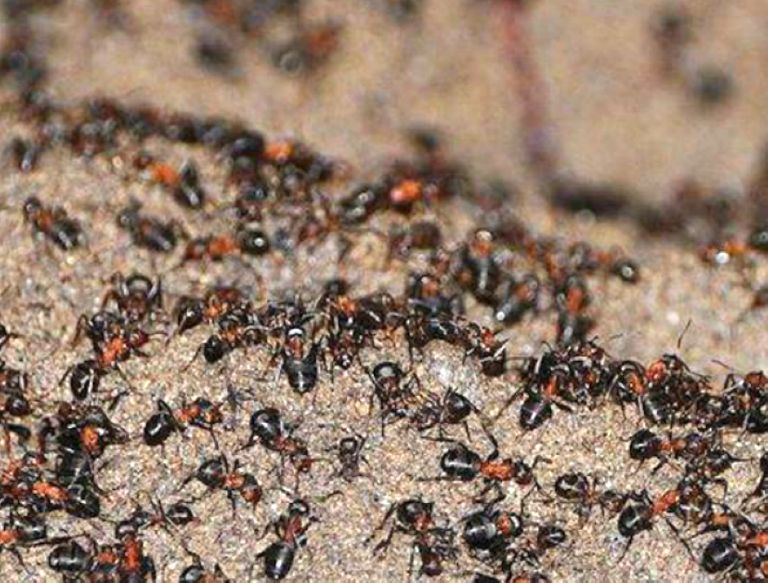 There, they discovered ants, which were shocking for multiple reasons: There were millions of them crawling around in the bunker, and they were trapped with no resources. Questions started piling up.
There, they discovered ants, which were shocking for multiple reasons: There were millions of them crawling around in the bunker, and they were trapped with no resources. Questions started piling up. -
3.
 Scientists believe the ants ended up in their precarious situation through a ventilation shaft. They couldn’t find their way out, making them self-contained and desperate to find food and water. The researchers assumed they wouldn’t last.
Scientists believe the ants ended up in their precarious situation through a ventilation shaft. They couldn’t find their way out, making them self-contained and desperate to find food and water. The researchers assumed they wouldn’t last. -
4.
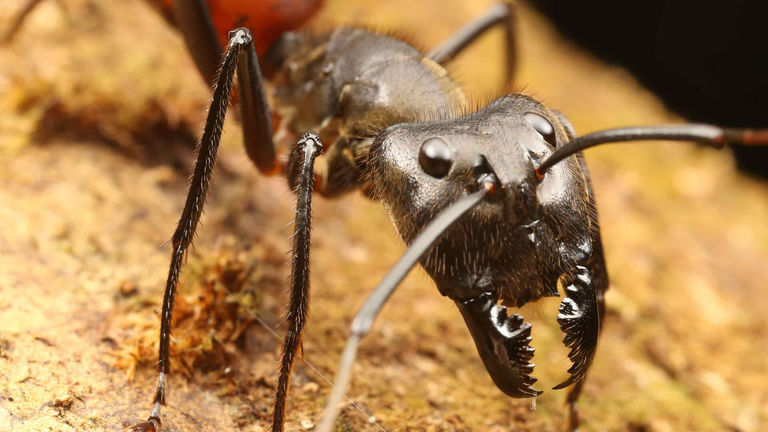 When the same team returned two years later to check on these ill-fated ants, they discovered something even more impressive: the ants hadn’t died off completely or weakened as a colony like they expected.
When the same team returned two years later to check on these ill-fated ants, they discovered something even more impressive: the ants hadn’t died off completely or weakened as a colony like they expected. -
5.
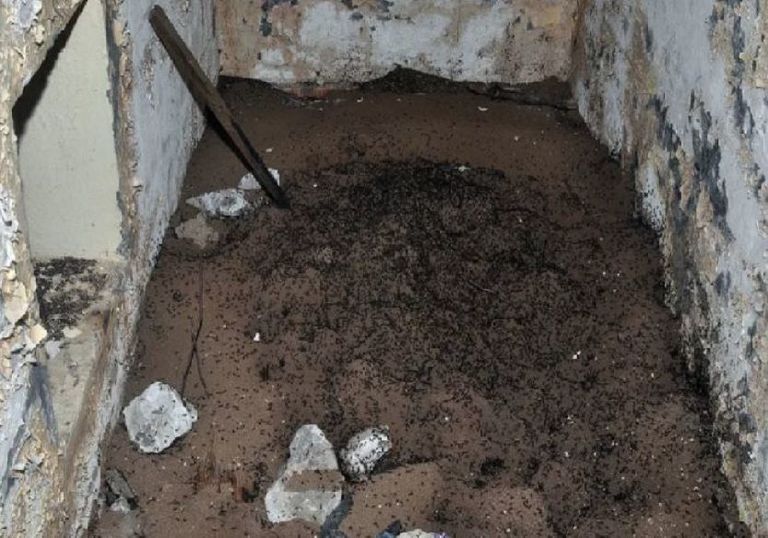 Instead, the ants were thriving with double the numbers of the last time the scientists were there. Still, there was no obvious sources of light, food, or water for these creatures. This left the team stumped as to how they survived.
Instead, the ants were thriving with double the numbers of the last time the scientists were there. Still, there was no obvious sources of light, food, or water for these creatures. This left the team stumped as to how they survived. -
6.
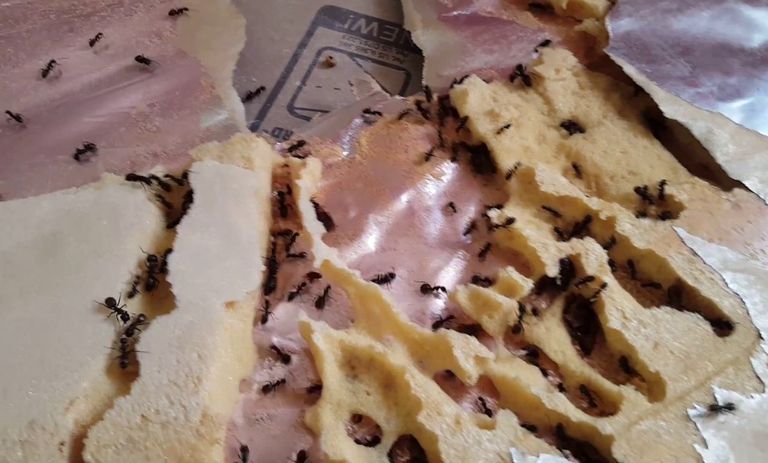 Ants are known to be resourceful and super hardworking little guys. There have been examples of ants founding colonies inside walls or under concrete. Sometimes even deep inside your car’s engine. But even for them, this was a stretch.
Ants are known to be resourceful and super hardworking little guys. There have been examples of ants founding colonies inside walls or under concrete. Sometimes even deep inside your car’s engine. But even for them, this was a stretch. -
7.
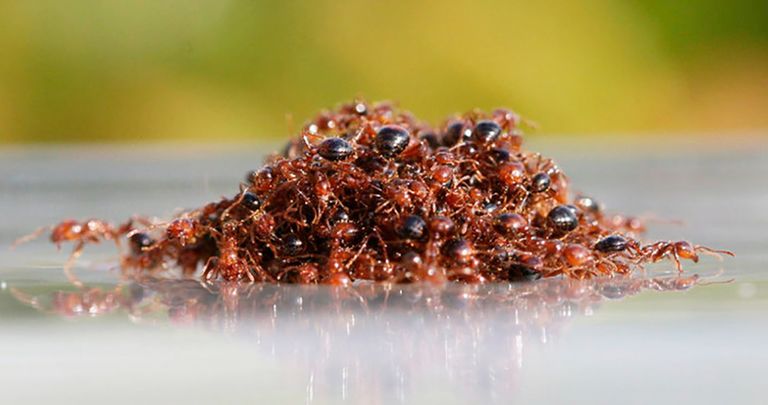 This particular nest was left with no choice, as they were confined to the derelict bunker. They were desperate to keep up their regularly scheduled programming and activities, no matter the cost. So they did the unthinkable.
This particular nest was left with no choice, as they were confined to the derelict bunker. They were desperate to keep up their regularly scheduled programming and activities, no matter the cost. So they did the unthinkable. -
8.
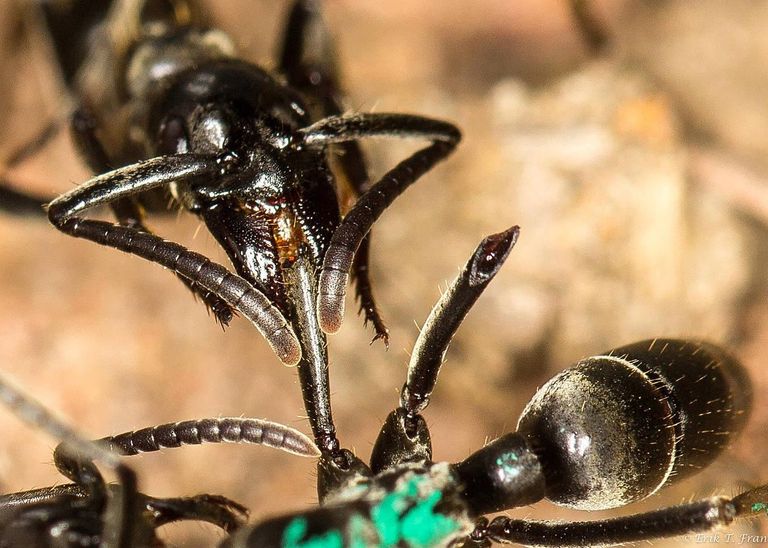 These trapped ants never stopped picturing their mates as giant chicken legs. They resorted to full-blown cannibalism on the bodies of their dead colony mates. The various ant corpses showed evidence of bite marks from other ants.
These trapped ants never stopped picturing their mates as giant chicken legs. They resorted to full-blown cannibalism on the bodies of their dead colony mates. The various ant corpses showed evidence of bite marks from other ants. -
9.
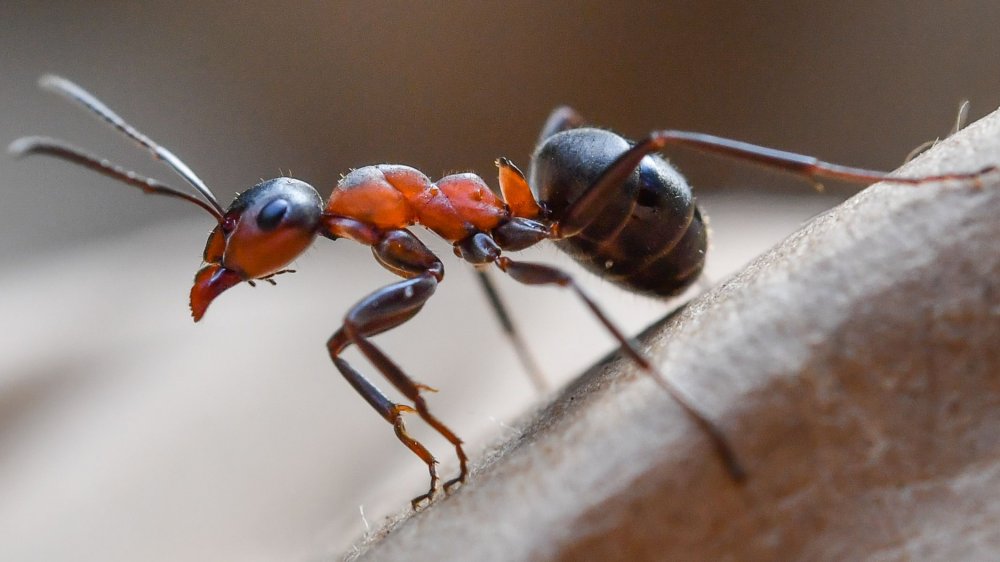 Interestingly, the cannibalistic wounds were focused on the abdomen-area of the fallen ants. The scientists have an explanation for this. Apparently ants share resources more effectively than any other being on earth.
Interestingly, the cannibalistic wounds were focused on the abdomen-area of the fallen ants. The scientists have an explanation for this. Apparently ants share resources more effectively than any other being on earth. -
10.
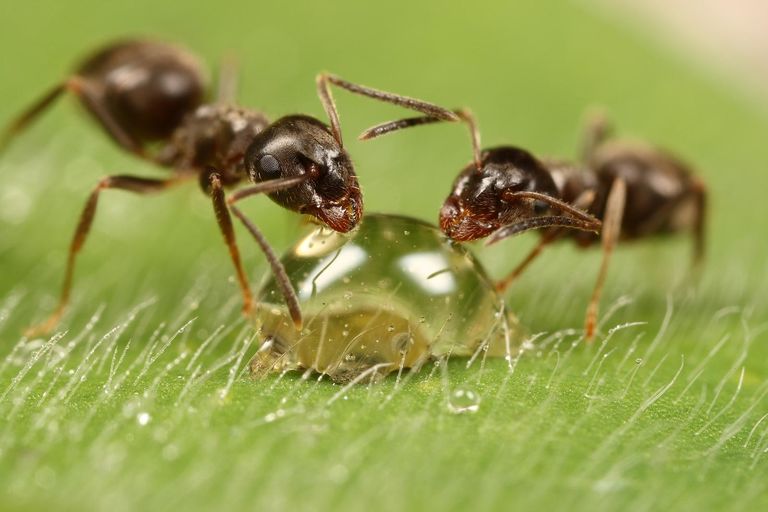 Sharing is caring, but ants take it to another, deeply upsetting level. Experts say that ants believe the stomach contents of other ants to belong to them as well. Hence the lack of hesitation when it came to devouring a pal.
Sharing is caring, but ants take it to another, deeply upsetting level. Experts say that ants believe the stomach contents of other ants to belong to them as well. Hence the lack of hesitation when it came to devouring a pal. -
11.
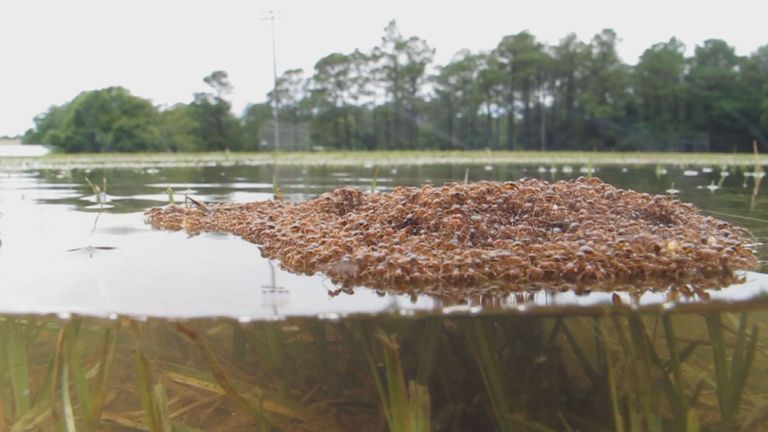 The team that found these ants cites this type of cannibalism as impressive resourcefulness. They so programmed to live and thrive “even under conditions going far beyond the limits of the survival of the species.” Ants have even been known to survive floods.
The team that found these ants cites this type of cannibalism as impressive resourcefulness. They so programmed to live and thrive “even under conditions going far beyond the limits of the survival of the species.” Ants have even been known to survive floods. -
12.
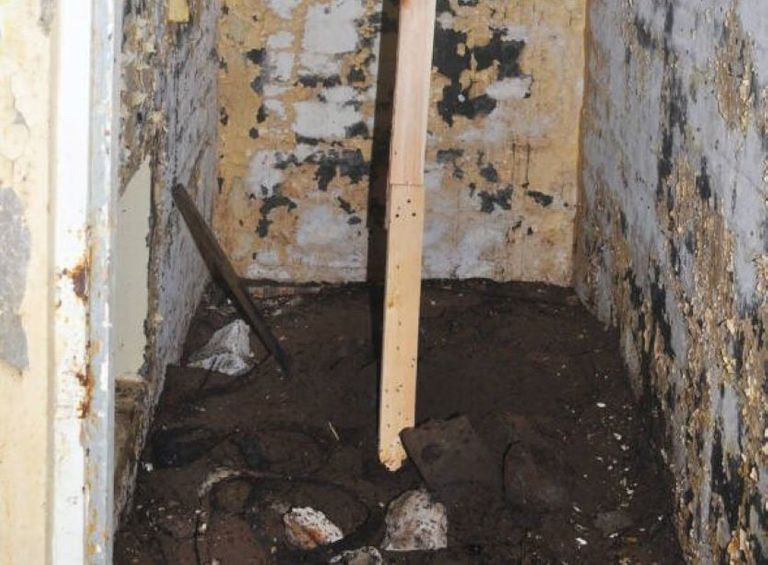 Post-cannibalism findings, the scientists left a two-by-four in the bunker that would provide a path out for the ants if they chose to take it. Once again, the team left the ants alone for another year. When they got back, more surprises awaited.
Post-cannibalism findings, the scientists left a two-by-four in the bunker that would provide a path out for the ants if they chose to take it. Once again, the team left the ants alone for another year. When they got back, more surprises awaited. -
13.
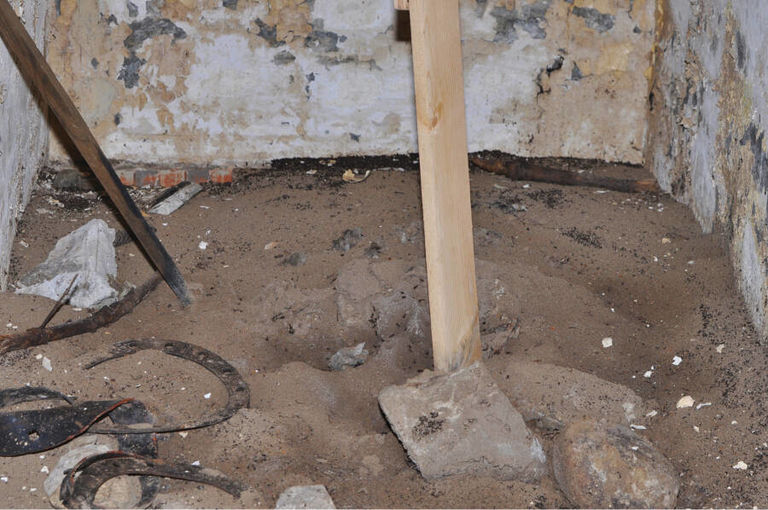 Scientists returned to a completely empty bunker. The cannibal army of ants evacuated the bunker entirely, hopefully to do more normal ant stuff that doesn’t involve cannibalism. For now, the bunker is abandoned and probably haunted by the ghosts of a million ants.
Scientists returned to a completely empty bunker. The cannibal army of ants evacuated the bunker entirely, hopefully to do more normal ant stuff that doesn’t involve cannibalism. For now, the bunker is abandoned and probably haunted by the ghosts of a million ants. -
14.
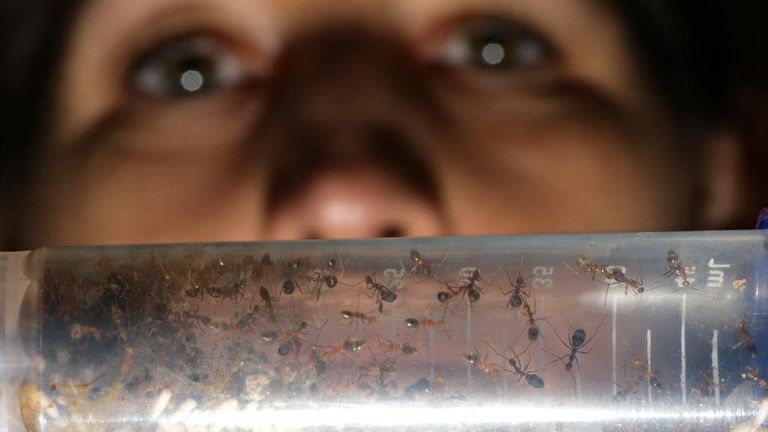 On the other hand, there may be an army of cannibal ants, a million-strong, stalking around somewhere in the Polish forest. The good news, however, is that this unusual situation does give greater insight into general ant behavior for experts in the field.
On the other hand, there may be an army of cannibal ants, a million-strong, stalking around somewhere in the Polish forest. The good news, however, is that this unusual situation does give greater insight into general ant behavior for experts in the field. -
15.
 The report on the savage ants states that these findings “add a dimension to the great adaptive ability of ants to marginal habitats and suboptimal conditions, as the key to understanding their unquestionable eco-evolutionary success.”
The report on the savage ants states that these findings “add a dimension to the great adaptive ability of ants to marginal habitats and suboptimal conditions, as the key to understanding their unquestionable eco-evolutionary success.” -
16.
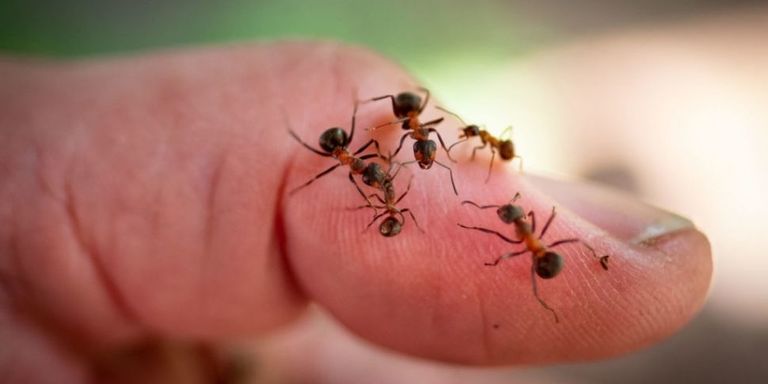 The idea of ants resorting to cannibalism is unsettling. Mother Nature, though, usually has an answer for everything. There’s one insect that can keep these crawlers under control.
The idea of ants resorting to cannibalism is unsettling. Mother Nature, though, usually has an answer for everything. There’s one insect that can keep these crawlers under control. -
17.
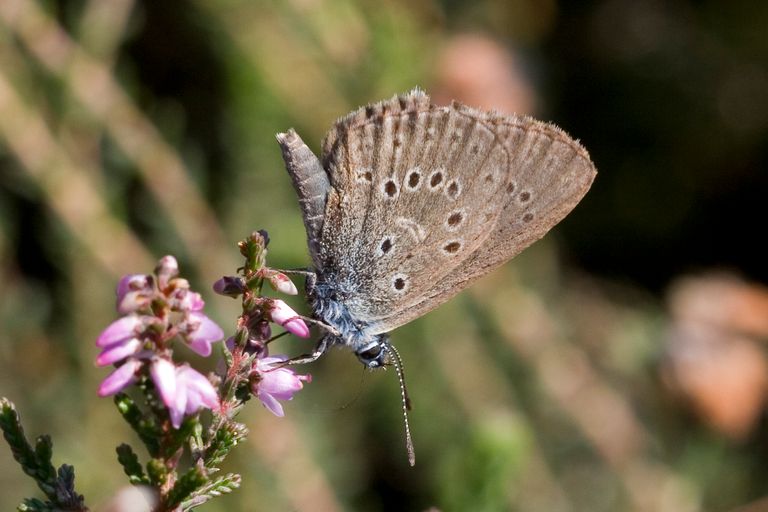 It’s called the Alcon blue butterfly, and you can find it fluttering around meadows throughout Europe. Of course, it mingles with its own kind, but there’s another animal it has a very fascinating relationship with.
It’s called the Alcon blue butterfly, and you can find it fluttering around meadows throughout Europe. Of course, it mingles with its own kind, but there’s another animal it has a very fascinating relationship with. -
18.
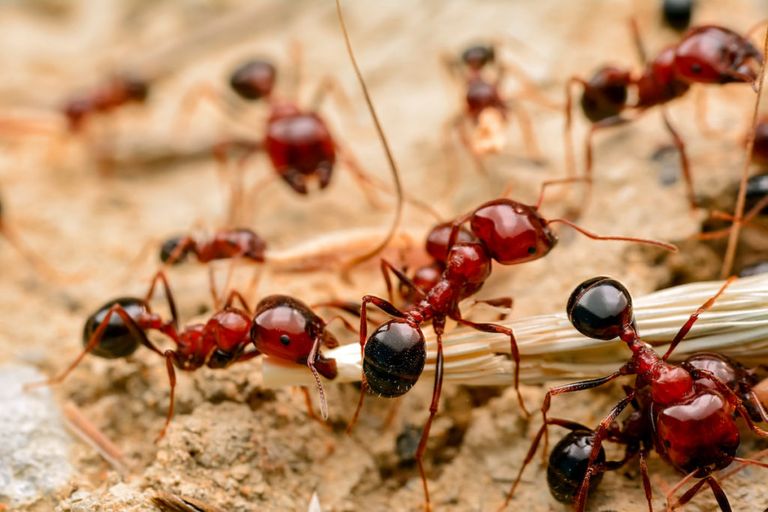 Two different species of red ants. One is called Myrmica rubra, and the other is Myrmica ruginodis. You’re probably wondering why these two ever interact, and it all starts with a rare plant.
Two different species of red ants. One is called Myrmica rubra, and the other is Myrmica ruginodis. You’re probably wondering why these two ever interact, and it all starts with a rare plant. -
19.
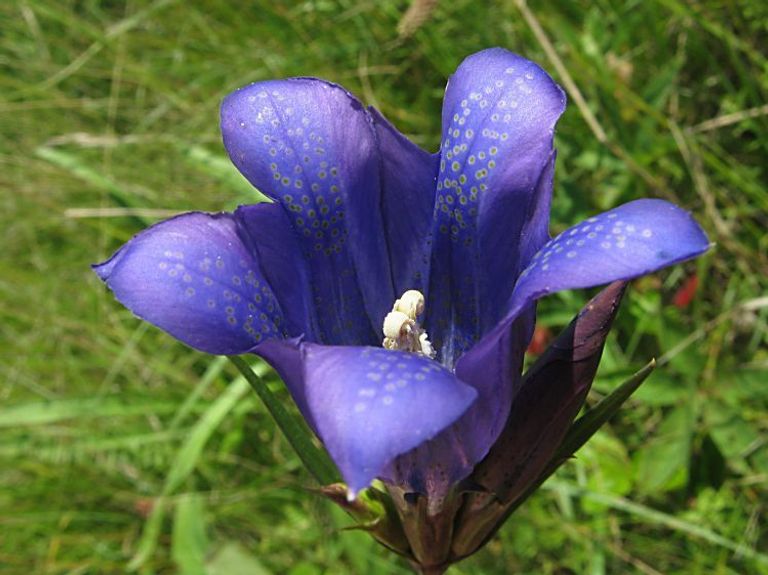 The marsh gentian plant is where the Alcon blue butterfly stops off to lay its eggs. There are usually several dozen larvae left after the butterfly finishes laying its offspring.
The marsh gentian plant is where the Alcon blue butterfly stops off to lay its eggs. There are usually several dozen larvae left after the butterfly finishes laying its offspring. -
20.
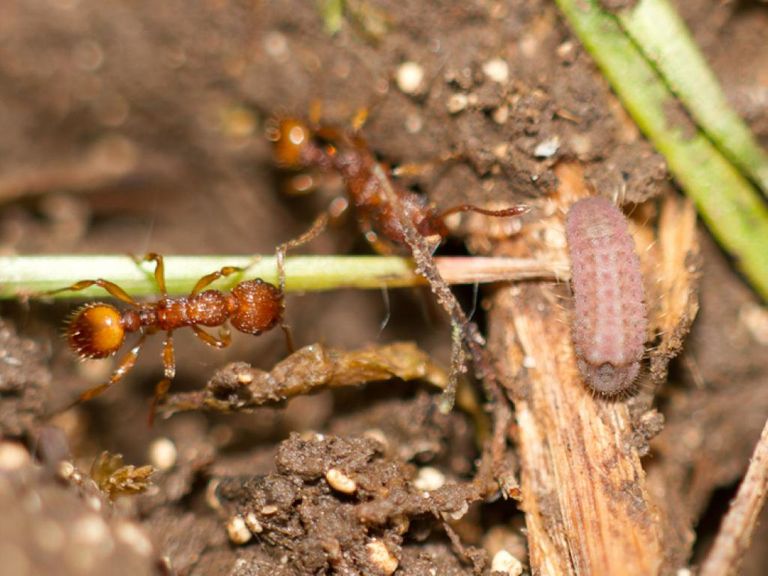 The Alcon blue butterfly is what’s known as a “brood parasite,” meaning it actually has its young raised by an entirely different creature, leaving the parents with little responsibility to care for their wee ones.
The Alcon blue butterfly is what’s known as a “brood parasite,” meaning it actually has its young raised by an entirely different creature, leaving the parents with little responsibility to care for their wee ones. -
21.
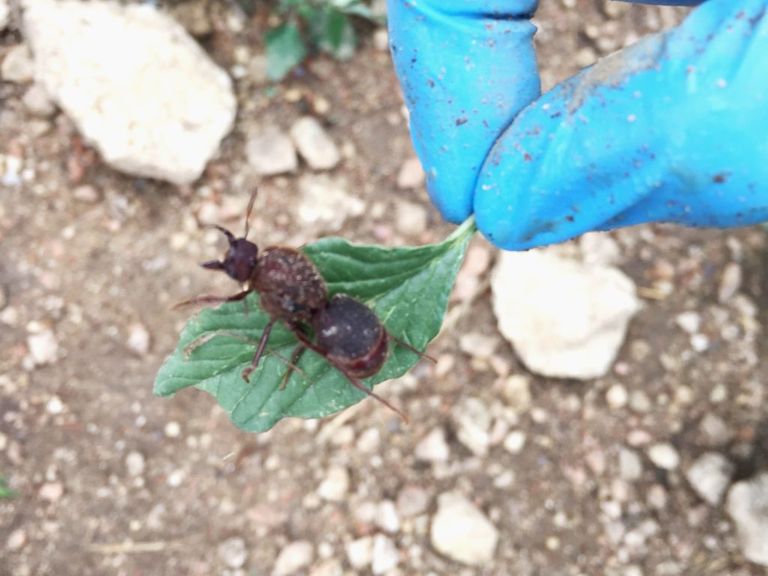 Those creatures are… you guessed it! The two species of red ants. Both the butterfly and marsh gentian plant are rare, but there are plenty of red ants that storm the flowers once the larvae are left.
Those creatures are… you guessed it! The two species of red ants. Both the butterfly and marsh gentian plant are rare, but there are plenty of red ants that storm the flowers once the larvae are left. -
22.
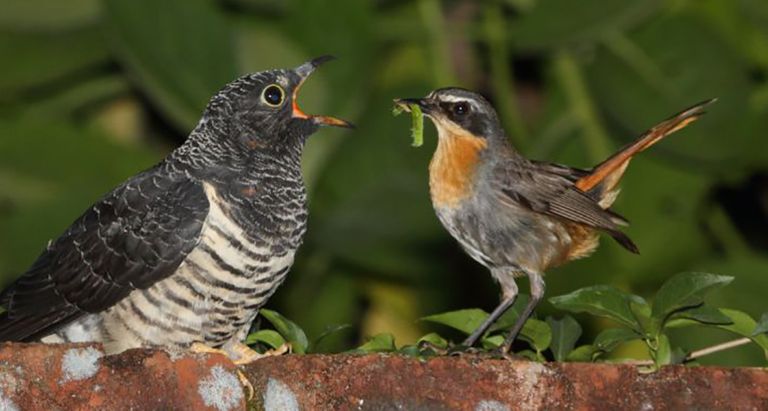 This fascinating process was studied intensely by a researcher named David Nash from the University of Copenhagen, Denmark and his team of dedicated colleagues. They compared this babysitting trick to a bird known for the same action.
This fascinating process was studied intensely by a researcher named David Nash from the University of Copenhagen, Denmark and his team of dedicated colleagues. They compared this babysitting trick to a bird known for the same action. -
23.
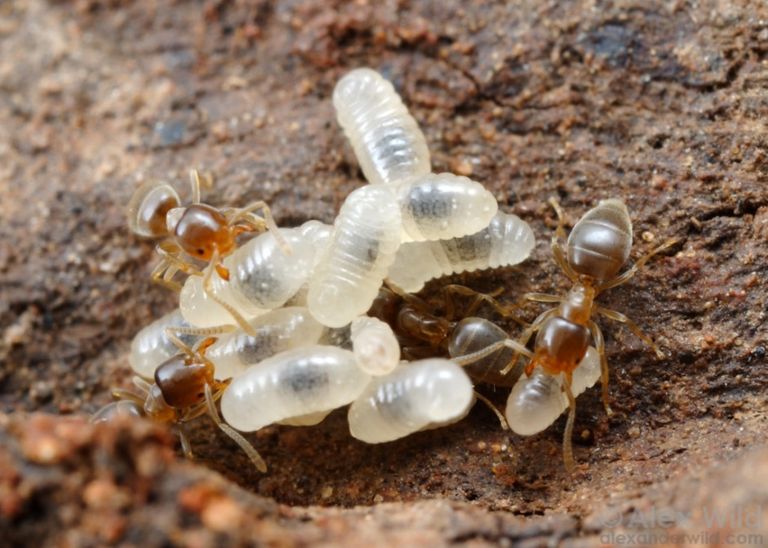 The cuckoo does pretty much the exact same thing as the Alcon blue butterfly. Also considered “brood parasites,” cuckoos will actually lay eggs in the nests of other birds to have their young raised for them.
The cuckoo does pretty much the exact same thing as the Alcon blue butterfly. Also considered “brood parasites,” cuckoos will actually lay eggs in the nests of other birds to have their young raised for them. -
24.
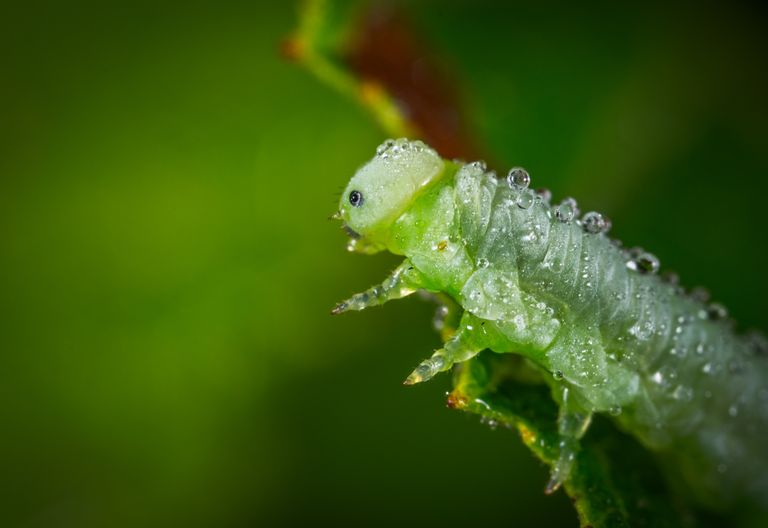 Once the butterfly leaves the area, large groups of red ants begin to scour the meadows in search of the larvae. There’s a specific reason the ants are so attracted to the totally different species.
Once the butterfly leaves the area, large groups of red ants begin to scour the meadows in search of the larvae. There’s a specific reason the ants are so attracted to the totally different species. -
25.
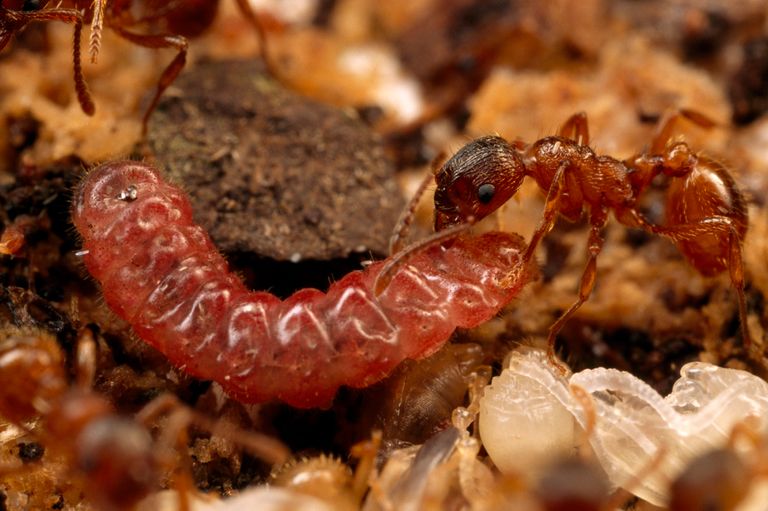 The caterpillars are actually coated in a layer of chemicals that basically mimics the same scent of the red ants. This causes the ants to believe the caterpillars belong to their nest.
The caterpillars are actually coated in a layer of chemicals that basically mimics the same scent of the red ants. This causes the ants to believe the caterpillars belong to their nest. -
26.
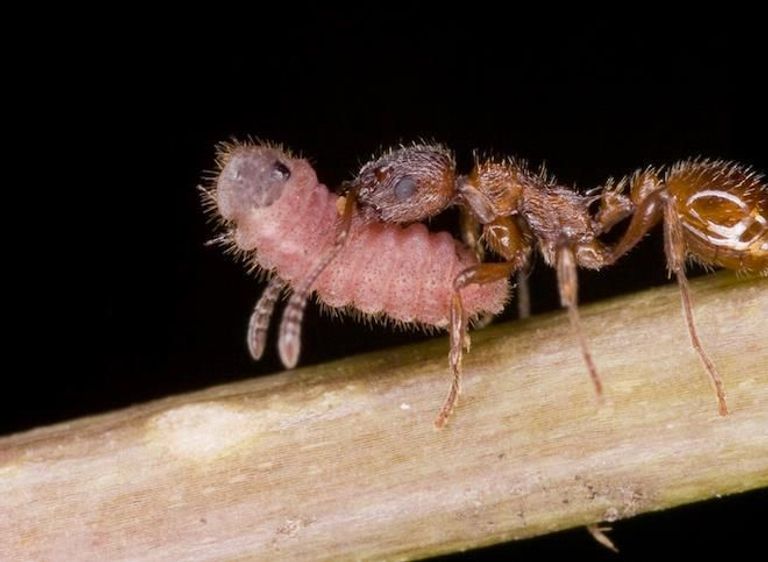 The ants then begin to tend to the larvae like their own offspring, completely fooled by the scent. But, it becomes an even deeper relationship than the ants simply tending to them.
The ants then begin to tend to the larvae like their own offspring, completely fooled by the scent. But, it becomes an even deeper relationship than the ants simply tending to them. -
27.
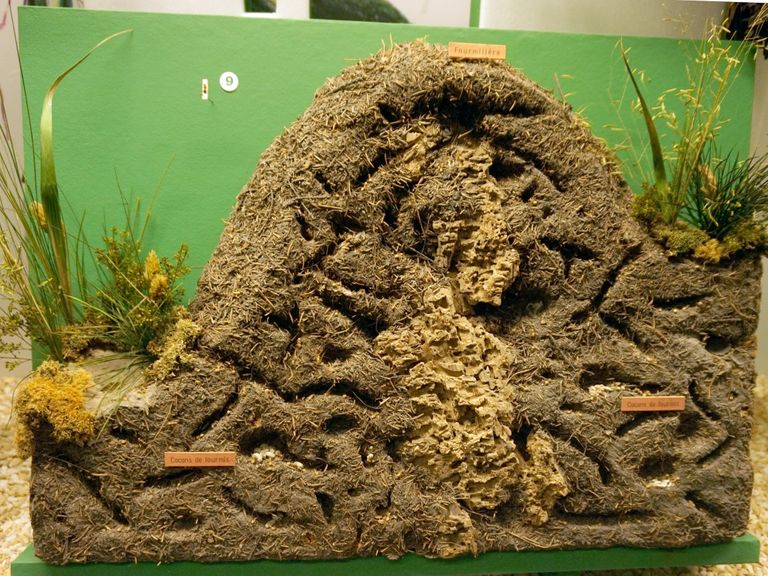 They will actually carry the caterpillars back to their hives, convinced they belong there. It might not seem like that big of a problem until you realize what happens once the caterpillars arrive.
They will actually carry the caterpillars back to their hives, convinced they belong there. It might not seem like that big of a problem until you realize what happens once the caterpillars arrive. -
28.
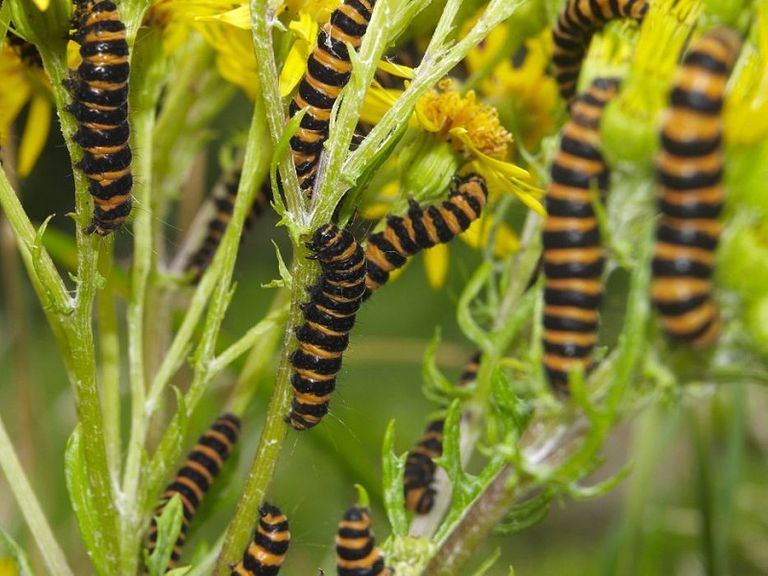 The ants almost completely abandon taking care of their own young! They put nearly all of their effort into caring for offspring that aren’t theirs. Even just a few caterpillars can lead to a nest having no surviving offspring of their own.
The ants almost completely abandon taking care of their own young! They put nearly all of their effort into caring for offspring that aren’t theirs. Even just a few caterpillars can lead to a nest having no surviving offspring of their own. -
29.
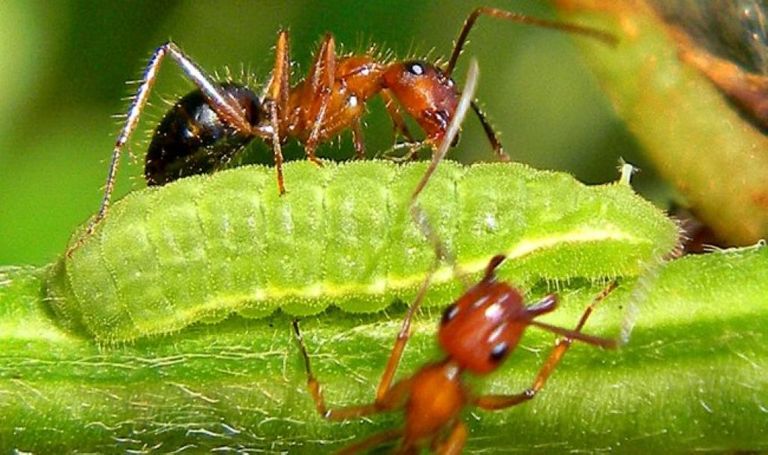 However, through his team’s research, David Nash believes the Myrmica rubra species of red ants will evolve over time to change their scent so the caterpillar larvae will no longer be cared for by mistake.
However, through his team’s research, David Nash believes the Myrmica rubra species of red ants will evolve over time to change their scent so the caterpillar larvae will no longer be cared for by mistake. -
30.
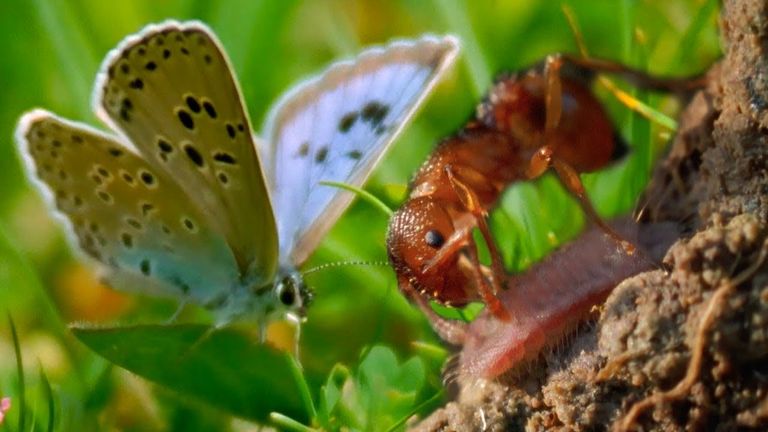 The species Myrmica ruginodis, though, may not develop the same evolutionary tactic. The Alcon blue butterfly will likely start to only focus on this species once the other becomes too difficult to infiltrate.The caterpillars spend up to 23 months in an ant nest before they emerge from their pupa as a butterfly. The ants, realizing their mistake, immediately attack the winged creature. But the butterfly is more than prepared.Covering the butterfly are protective scales that prevent the ants from inflicting any real damage. Then, they fly away having successfully duped the entire colony. This bizarre act of nature, however, is just one of many throughout the animal kingdom.
The species Myrmica ruginodis, though, may not develop the same evolutionary tactic. The Alcon blue butterfly will likely start to only focus on this species once the other becomes too difficult to infiltrate.The caterpillars spend up to 23 months in an ant nest before they emerge from their pupa as a butterfly. The ants, realizing their mistake, immediately attack the winged creature. But the butterfly is more than prepared.Covering the butterfly are protective scales that prevent the ants from inflicting any real damage. Then, they fly away having successfully duped the entire colony. This bizarre act of nature, however, is just one of many throughout the animal kingdom.
- REPLAY GALLERY
-

- Giant Colony Of Ants takes Over Old Nuclear Plant
- NEXT GALLERY
-

- Random Super Pictures From The Interweb 1,114...
Back in 2013, Polish scientists went on an expedition to observe bats they thought were nesting in an abandoned bunker. The spot had been part of a former nuclear facility and was now an overgrown home to various creatures.
30/30
1/30
Categories:
Eww


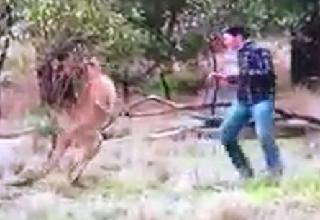


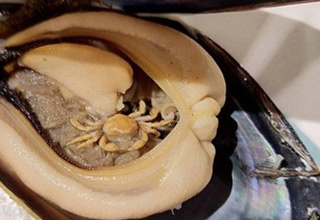
0 Comments